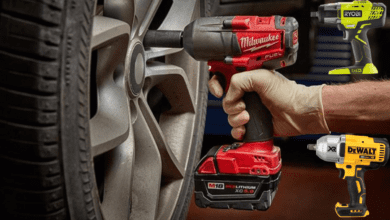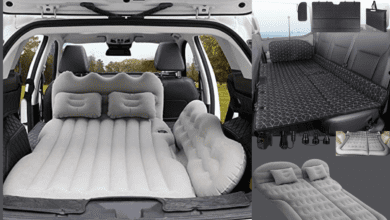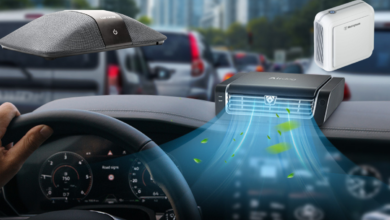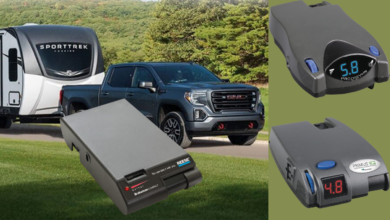The best all-season tires
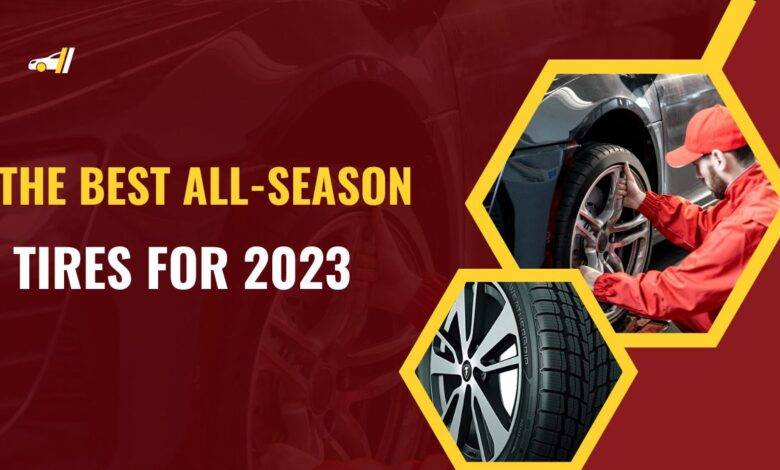
All-season tires, as its name suggests, are designed to provide a comfortable, quiet ride together with the best traction possible, regardless of the season or the condition of the road. The rubber compositions and tread designs are appropriate for various temperatures and climatic circumstances, including light snow. All-season tires’ adaptability enables most drivers to get by with only one set without considering changing them out seasonally or where to keep the spares.
The drawback of all-season tires is that although they function well in most weather conditions, they provide less traction on heated pavement or compacted snow than summer or winter tires. All-season tires are great for drivers in mild temperatures and driving situations since they combine summer and winter performance. People who live in regions with longer winters often use all-season tires during the other three seasons and convert to a pair of snow tires during the winter.
Continue reading for ‘an analysis of five of the finest all-season tires available, regardless of whether you drive a passenger car, van, SUV, or crossover. For a list of the top tires for full-size SUVs and pickup trucks, click here.
While evaluating our tire options, we’ve chosen the Toyota Camry with 16- or 17-inch tire widths as the default car. However, the majority of our options are accessible for a variety of vehicles, crossovers, and compact SUVs.
Michelin CrossClimate 2
Of the 57 Grand Touring All-Season tire choices available on Tire Rack, Michelin’s Crossclimate 2 tires are ranked the best. The Crossclimate2 is a popular option for drivers of sedans, coupes, wagons, crossovers, and SUVs seeking assured performance on dry, wet, or even lightly snow-covered roads due to its reputation for offering good performance and ride comfort in a durable package. The sophisticated tread design of Michelin tires helps block out noise, and many owners praise the quiet and smooth ride. A tiny number of reviewers claim that the tire’s centring is a little unclear or inaccurate compared to other brands at highway speeds of 70 mph or greater, but it might possibly be because of other problems with their cars. On Tire Rack’s 10-point scale, the Crossclimate2 received ratings of 9.5 for performance on wet roads and 9.4 on dry roads, although most drivers said they wouldn’t advise venturing too far off-road. For an all-season tire, traction in snow for braking, turning, and accelerating is remarkable, although some drivers reported worse fuel efficiency when compared to their vehicle’s original tires.
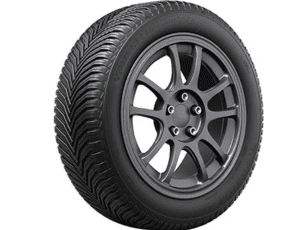
Bridgestone Turanza QuietTrack
Drivers give Bridgestone’s Turanza QuietTrack tires an “excellent” rating for their superb ride comfort, superior dry and wet road performance, and remarkable treadwear lifespan. It has been shown that the Turanza Quiettrack improves safety in bad weather, but like other all-season tires, it lacks the grip necessary to navigate heavy snow successfully. This is particularly true if the snow is compacted and already slick. The Turanza QuietTrack is a luxury-oriented tire tested by Tire Rack and found to be among the best for all-season on-road refinement. It should be noted that a small number of drivers reported a decrease in overall ride comfort after traveling 30,000 miles or more, while the reason for this is unclear. After a certain amount of miles, several different variables, including tire pressure, wheel alignment, and driving style, may influence tire performance.
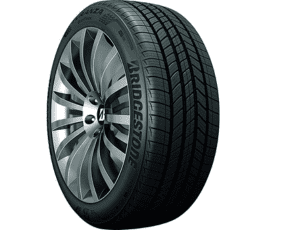
Firestone Weathergrip
Firestone’s Weathergrip tires combine the brand’s Hydro-Grip tread technology with full-depth grooves to cut through the water and prevent hydroplaning. Interlocking grooves and high-density zigzag sipes provide consistent grip in slick circumstances. Even in the heaviest downpours, drivers brag for a confident and pleasant ride all season long. Positive and negative may be said about how similar the Weathergrip is to a winter tire. In the rain or snow, this tire is said to feel grounded and sticky during turns or rapid maneuvers, but it may make a car’s steering seem heavy and slow to react. These characteristics are similar to those of specialist winter tires, although energetic drivers acclimated to summer performance rubber will notice them the most. Some drivers complain about a little bit more road noise, but that is a usual trade-off if you’re searching for a tire with exceptional wet-weather grip. The ride quality is still outstanding compared to other tire types.
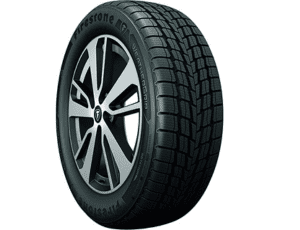
Goodyear Assurance WeatherReady
The Goodyear Assurance WeatherReady tire is ideal if you want one that performs well in the winter and decently in the summer. Goodyear’s Weather Reactive Technology uses outboard tread ribs and center 3D Tredlock Technology Blades for steady cornering and braking in slick situations, making it better in snow than the typical all-season tire. With Goodyear’s Evolving Traction Grooves, high levels of traction are maintained even when the treads deteriorate. Despite having a six-year, 60,000-mile guarantee, drivers have stated that their tires have reached the low tread warning as soon as 40,000 miles have passed. The Assurance WeatherReady tires enable straight-line tracking at freeway and highway speeds after a 1,000-mile break-in period. A tire with improved grip on wet, slushy, or snowy roads comes at the cost of increased road noise and a harsher ride throughout the summer and on warm roads. Dry traction leaves much to be desired on gravel or dirt roads and might activate your car’s traction control.
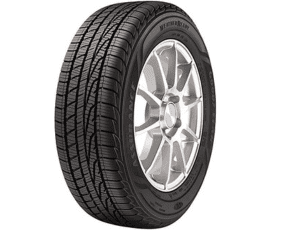
Continental TrueContact Tour
Customers of Tire Rack rank Continental’s TrueContact Tour tire as one of the top standard touring all-season tires out of over 3,409,000 kilometers recorded. With a lifetime of 70,000 miles (V-speed rated) or 80,000 miles (T- and H-speed rated), the TrueContact Tour offers exceptional value.
In addition to extending tread life and improving fuel economy, this tire’s rubber formula is engineered to provide sure-footed grip and agile handling in dry, wet, and light snow situations. The Comfort Ride technology from Continental provides a layer under the tread to isolate and absorb vibrations. However, the tire will still emit more noise from the road than summer tires, which generally have fewer sipes and smoother tread blocks. The TrueContact’s broad circumferential grooves prevent hydroplaning while driving on wet surfaces. Silane additives from Continental improve grip in slick weather. However, a good winter tire or the previously stated Goodyear Assurance WeatherReady tires are better options if you often drive through heavy snowfall.
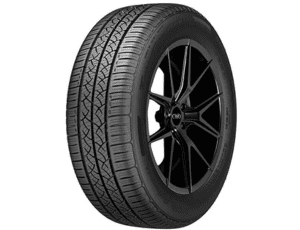
What distinguishes all-season, summer, all-weather, and snow tires?
All-season tires are designed to function well in various climatic and tire conditions. They retain a grip on wet roads and through light snow in warmer areas, although they don’t have the same traction as summer tires.
Summer tires are top performers when it comes to handling thanks to their stickier compound and tread pattern, but they are not the best option in regions where the cold weather of the autumn, winter, and spring stiffens the compound used to create summer tires. Summer tires are not the best option in the snow or on ice, bearing that in mind.
All-weather tires function effectively in various weather and road situations, similar to all-season tires. All-weather tires differ from all-season tires in that they have the 3 Peak Mountain Snowflake insignia on their sidewall, indicating that they have undergone testing and are effective in winter driving. This distinguishes all-weather tires from all-season tires. All-weather tires perform far better on snow and ice than all-season tires and may even be utilized in the sweltering summer heat.
The 3 Peak Mountain Snowflake insignia is found on winter tires, which should only be used in the winter. Their material is too soft for warm weather, but it is perfect for regions where winter temperatures drop below 44 degrees Fahrenheit. Even though both carry the 3 Peak Mountain Snowflake insignia, winter tires perform better in severe winter conditions than all-weather tires.
Questions and Answers
How often should tires be changed?
The climate, how the car is utilized, your driving habits, and how consistently you check your tire pressure all affect how often you should change your tires. Good tires should typically last up to 50,000 miles before requiring replacement. No of how many miles you drive, the NHTSA advises replacing tires at least every six years. If you often drive in the snow or on unpaved roads, you may want to think about changing your tires more frequently.
How can I determine the size of tires I require?
On the sidewall of your current tire, you can see a series of numbers and letters like this when you look closely: 265/70R17. The width, height, and diameter of the tire are represented by this tire size. The value “265” represents the tread width in millimeters, “70” the sidewall aspect ratio, and “17” the tire diameter, which should be the same as the diameter of your wheel. In terms of handling, wider tires create a broader footprint to reduce tire pressure to the ground, which gives them more grip and helps them to “float” over rougher terrain. Conversely, higher sidewalls cause you to lean more laterally in corners. The total size of the tire will have a more detrimental effect on your vehicle’s fuel efficiency. Going overboard may result in fitting problems and tire rubbing.
Can all-season tires be used throughout the year?
Although all-season tires are intended to be adaptable for each season, it is difficult for one tire to work flawlessly in every circumstance owing to different tire compositions and technological restrictions. For instance, in regions with scorching summers, tires with softer materials that perform well in colder conditions would wear considerably more quickly. All-season tires work well in hot or cold weather and are particularly helpful in four-season regions. Even little snow or sporadic off-roading won’t stop them from getting you where you need to go.
Should I get four new tires?
For cars with two or four wheels, the Tire Industry Association (TIA) and most automakers advise changing all four tires simultaneously. Used tires with less tread spin more quickly than brand-new tires with zero mileage due to their smaller diameter. Different tire compounds and tread patterns have varying performance characteristics and are designed to function as a whole set.
What PSI should my tires have while driving on the highway?
On all-season tires, the ideal tire pressure for highway travel is normally between 30 and 35 PSI while the tires are cold. The air temperature within a tire increases by around 50 degrees in hot weather, which may cause the pressure to climb by roughly 5 PSI. The sidewalls of tires are marked with the manufacturer’s maximum tire pressure recommendation. Running your tires at or beyond the recommended maximum pressure might result in excessive wear or even a tire rupture, which could harm your car. Less pressure will limit how much weight the tire can safely support and cause it to heat up faster as it travels down the road. Due to the increased friction between the tire and the road might also result in worse fuel efficiency.

